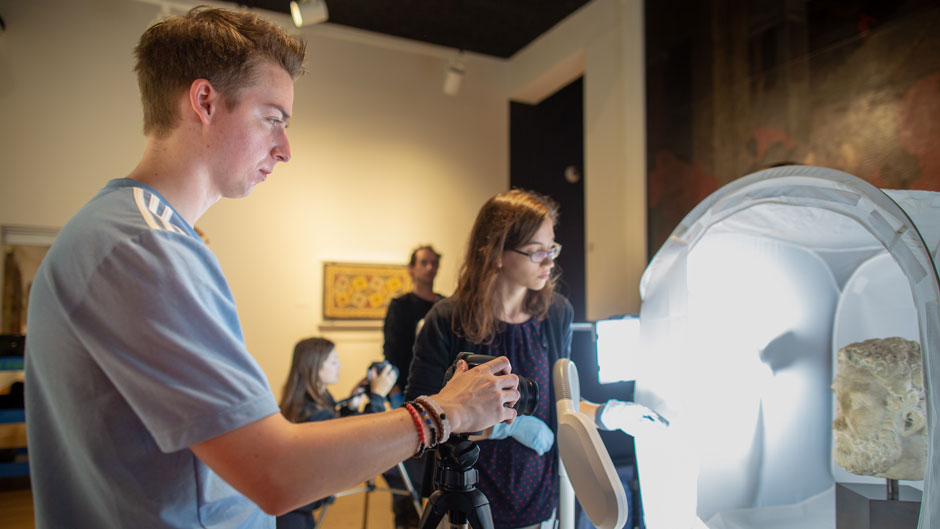Although senior Ashlyn Marcinak is not planning on a career in art history, she jumped at the chance to take a class where she was able to create a 3D printed model of an ancient theatre mask from Greece because she knows the technology can be applied to her future career in biochemistry.
“This class is a lot more hands-on than other classes and I like using this software because it could be beneficial in my science career,” said Marcinak, who is interested in investigating the structure of proteins using 3D models.
An interest in learning about the technology of the future attracted many University of Miami students to a new spring class called Animating Antiquity, taught by Art History assistant professor Karen Mathews and Classics lecturer, Han Tran. During the class, students were grouped in teams of four and learned about the historical context of about eight different Greek and Roman tools and sculptures from the Lowe Art Museum, with a final goal of creating an interactive exhibit for museum visitors to get an in-depth primer onsome of the museum’s oldest artifacts.
“3D printing has a lot of potential in different industries, so it’s worth picking up on that skill,” said Johnathan Libier, a junior studying biology, who was responsible for editing the virtual 3D model of his group’s artifact called “Bearded Roman.”
Funded by a Create grant through the Andrew W. Mellon Foundation, Mathews and Tran’s spring class began with students photographing 360 degree views of their group’s pieces from the Lowe and then meshing those photos together to create virtual and real 3D printed models of the items used in ancient Greece and Rome. They were assisted several times by senior instructional designer Gemma Henderson, who works in the learning innovation and faculty engagement department of UMIT Academic Technologies, as well as graduate student Monica Travis, who has experience with digital sculpture.
Mathews, who has worked with 3D printing a bit in earlier classes, said this course was a chance to examine the history of the ancient tools and allow students to learn about 3D technology, while also creating a way to engage the Lowe’s visitors with the artifacts.
“These are all functional items. Not one was made just to be beautiful, and we wanted to see how people interacted with them, so that’s what we are trying to recreate with these models,” Mathews said.

